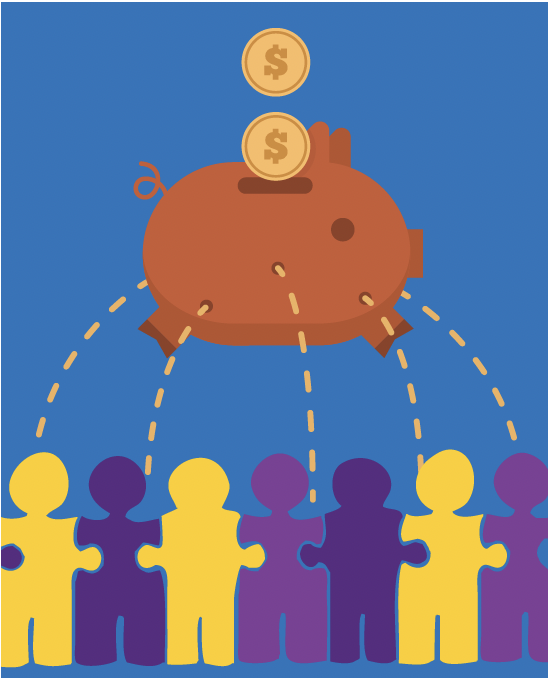Pooling Our Resources
September 6, 2023

Members of our union, on the other hand, enjoy some of the best pay and conditions in the country. The only reason for that is because we come together in numbers so large that the bosses simply cannot ignore us.
It took many decades for members to build our Union into the powerful force for improving the lives of working people that it is now. It all started with a group of leftwing activists working as pharmacists in the 1930s. The Union’s founders were deeply committed to wall-to-wall unionism, as well as racial and ethnic solidarity.
In 1937, these early 1199ers launched a campaign to hire Black pharmacists in Harlem and to promote Black workers to the position of porter. (see March on Washington was Led by Labor Unions, p. 22.) A couple of decades later, our Union decided it was time to organize maintenance and service workers at seven private, nonprofit hospitals in New York City. In the late 1950s, most of the other unions were reluctant to organize poverty- wage workers, most of whom were women of color.
During the 1959 campaign, dozens of women emerged from the ranks. The late Lena Hayes, a former Retired Member’s Division president, earned $29 for a 44-hour week as an aide at Manhattan’s Mt. Sinai Hospital. “That struggle changed my life forever,” Hayes said in a 2015 interview. During the 1959 strike, she resisted the pleas of her mother to cross the picket lines or to find another job, noting that the Union, though it didn’t have much in its treasury, provided strikers with food, car fare and other forms of assistance. The Union’s welfare committee helped some 600 workers apply for public assistance.
The unity between the pharmacists and the hospital workers was widely believed to be a decisive factor in the strike’s outcome. Lawrence Silber, another pharmacist at the time and a former Pathmark 10-years delegate, recalled: “We pharmacists agreed to add a dollar to our monthly dues because we knew that building a bigger more powerful union would help us all,” he says.
By now, 1199 has now grown to around 450,000 members spread across New York, New Jersey, Massachusetts, Maryland, Washington DC and Florida. This means that when members pool their resources in the form of dues, there is enough money to not only hire lawyers at the bargaining table—but also to bus in members from all over New York metropolitan area to support the Clara Maass nurses in New Jersey in their July rally for a fair contract. (See Bringing the Heat p. 16)
But sometimes, while thousands of members do turn out, other members sign up and decide not to show up at the last minute. This means that busses that were booked and paid for based
on sign up numbers are not full. Extra space on busses translates into money going to waste. That money comes from the Union treasury that every member contributes to when they pay dues. So, let’s be accountable to each other and not waste money from our fighting fund. When we are committed to justice and accountable to each other, there’s no limit to what we can win.

